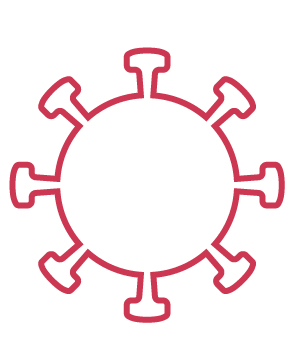Track record
Vaccines that don’t demonstrate overall safety in small phase 1 and 2 trials will not go any further. Some of the leading coronavirus candidates have the advantage of being based on familiar, time-tested formulas, including candidates containing a viral protein or inactivated whole virus, with or without an immune-boosting adjuvant. Other contenders represent newer technologies, including those based on RNA, DNA or virus-like particles, but even some of these approaches have already led to licensed vaccines against other diseases or at least gone through prior human trials. And they have a few advantages of their own, such as fast manufacture or smaller dose requirements.
Viral vectors are both old and new, having been long in development for other applications and already used in some licensed vaccines. This design reliably provokes an immune response, but the vaccines may also share a potential problem: the harmless viruses that serve as a “vector” to ferry genetic instructions into cells may already be recognized by the human immune system, which can reduce vaccine effectiveness and require higher dosages. Another worry is that a first vaccine shot could create immunity to the vector that weakens the effect of a second shot. For vaccine designers, “it is a risk to be mitigated,” Nathalie Garçon, CEO and CSO of BIOASTER and former chief of GSK Biologicals’ Global Adjuvant Center for Vaccines told Reuters. Large-scale trials will reveal if the risk is serious and if vaccine designers can find a way around it.
Trial results
Whether a pandemic vaccine requires one dose or two, and how far apart shots must be given, can impact how practical it will be to distribute and how much it costs. Phase 3 trials–which typically include tens of thousands of volunteers with a greater diversity of backgrounds and a wider age range than early safety trials–will also reveal a vaccine’s efficacy: how much of the population it is likely to protect, and to what degree.
The race for a vaccine against SARS-CoV-2 is challenging the vaccine industry at every level, Garçon said. Vaccine designers are not only trying to make a single vaccine meant to protect 2 billion people or more, they’ve been doing it without knowing what immune responses equate with protection against this new virus. As a proxy, many compared responses in early trial volunteers to those seen in recovered COVID-19 patients. In phase 3, researchers can begin to see who resists infection in the real world. Experts project the leading candidates might protect roughly 70% of vaccinated people against infection or against severe COVID-19 if they are infected. The U.S. FDA has set a minimum threshold of 50% efficacy to even consider a vaccine for approval. Still not clear is how long that protection will last, but it could be as little as a year, AstraZeneca CEO Pascal Soriot said last June and BioNTech chief executive Ugur Sahin echoed in November.
Advance orders
All the unknowns have not stopped governments and international organizations, including the WHO through its COVAX initiative, from pouring funding into a handful of candidates to speed their development and regulatory review. A fierce international competition to lock in billions of dollars’ worth of purchase commitments has also been underway for months, and some companies will soon start delivering millions of doses.
Now, the vaccine candidates must prove themselves. We’re tracking the candidates closest to producing results and a few that represent promising new technologies to watch.
Sources
Reuters reporting, companies, Vaccine Centre at the London School of Hygiene and Tropical Medicine, WHO, PHARMAnetwork
Reporting and writing by Christine Soares
Graphics, design and development by Travis Hartman
Illustrations by Ally Levine












